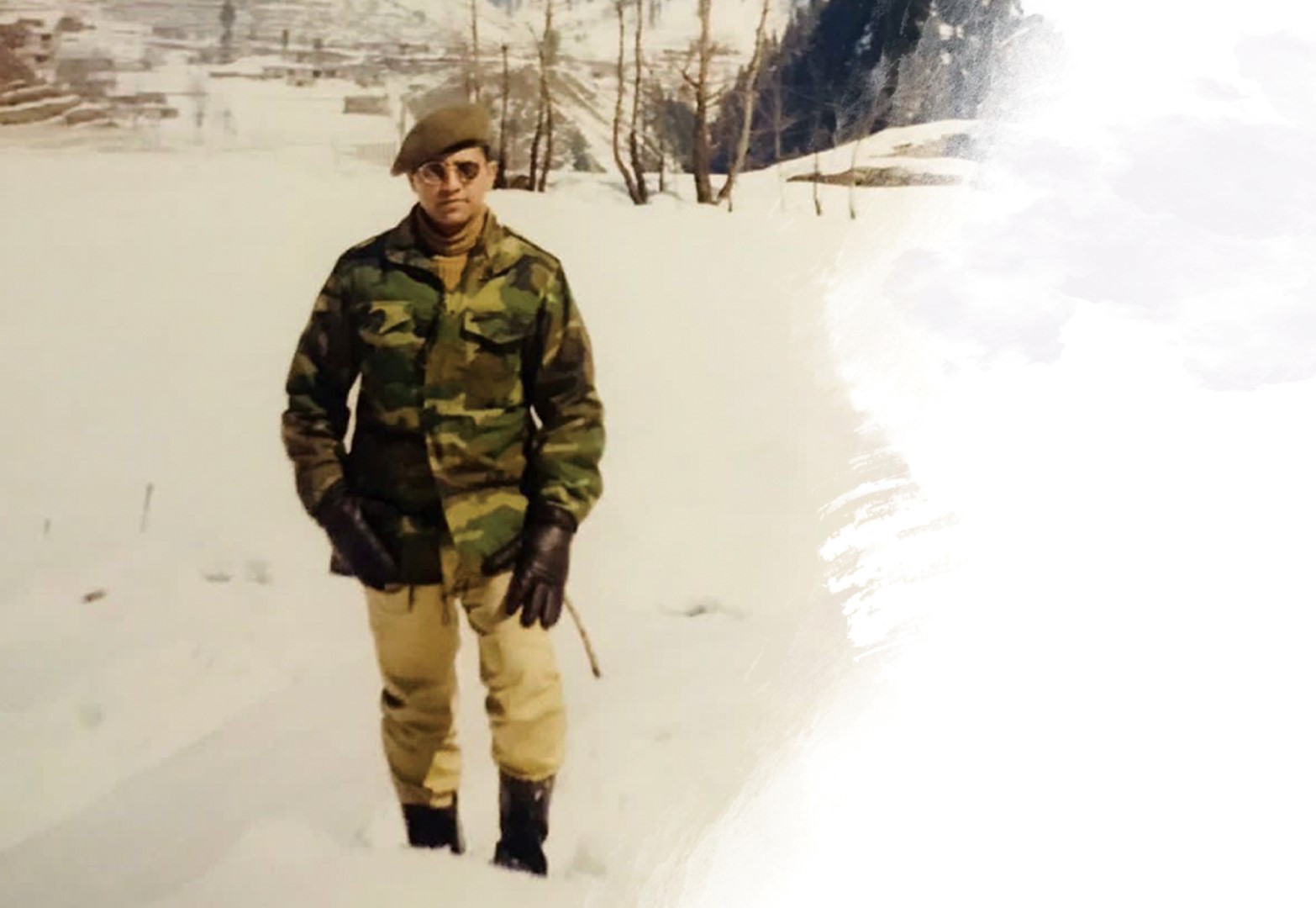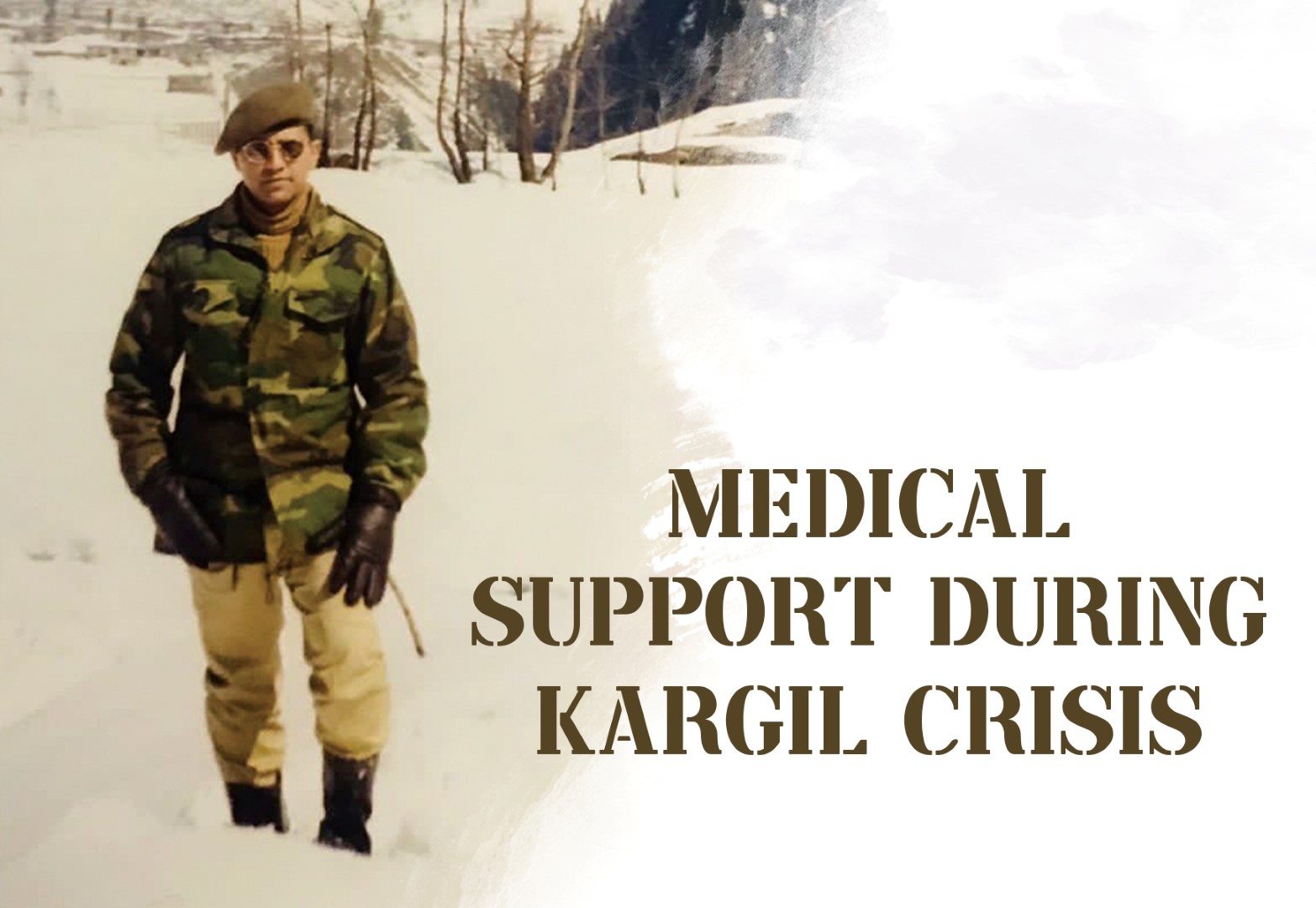Signalian
PDF THINK TANK: CONSULTANT

- Joined
- Aug 18, 2015
- Messages
- 10,608
- Reaction score
- 305
- Country
- Location
Medical Support During Kargil Crisis
An ordeal of life, death and sleepless nights of a young army surgeon deployed on the frontlines of snow-clad upper Neelum Valley, saving lives of soldiers and civilians in an active combat zone.

Kel Sector: It was the calm morning of March 27, 1999; the warm golden rays of the morning sun were brightening the snow-clad mountains and valleys. The fragrance of cool wind from the mountain tops was descending into the valleys, creating a subtle, sweet melody.
Suddenly, the ambiance of peace and tranquility prevailing around the valleys was shattered by the shredding sounds of enemy’s heavy artillery. Indian long-range batteries of Bofors guns had opened fire with their complete ferocity, creating havoc on the frozen front of Kel Sector and upper Neelum Valley. For the men on ground, it was a challenging time as every square on the map of the valley was being bombarded by the enemy. The echoing sounds of the pounding guns in the mountains and the shrilling melodies of its splinters was heard by all and felt by many. Enemy’s Bofors gun batteries also opened up at Machal Post, Brigade Headquarters in Kel and Sharda sector.
The wooden huts of innocent civilians also became a victim of high explosive rounds and air bursts of Indian artillery, burning them to ashes. During this conflict, five soldiers of Heavy Mortar Battery and many civilians fell prey to the volley of enemy’s air burst in Arang Kel sector. These severely injured men were evacuated to Mobile Surgical Team (MST) immediately. Owing to deep wounds and excessive bleeding, the injured knew that there were very bleak chances that they would survive. Little did they know that amidst this trial and turmoil, a miracle was awaiting them.
A dedicated young surgeon, Major Manan Masud along with his motivated colleagues of 26 (Independent) MST and 74 Staging Section were already busy in carrying out life-saving surgeries of injured civilian trauma victims who had reached MST earlier. This surgical team remained unwavered even when a medium gun shell exploded inside the MST compound.
On the fateful summer of 1999, from June till August, the Kel Brigade again came under intense enemy artillery shelling leading to the influx of mass casualties from all sectors. It was the noon of June 21; the sun had resorted to its full brilliance, revealing the ugliness of the conflict. Unleashed enemy artillery pounding had burned the civilians’ wooden huts, destroying their small villages, leaving behind innocent women and children lying either injured or dead at various corners and culverts.
Due to heavy spells of snowfall, Noorinar top, Kiran and Laswa bypasses were completely blocked, cutting them off from the rest of the country for almost four months. Life-sustaining chord for the troops on ground including medical supplies was maintained by helicopter missions, undertaken only in fair weather. The replenishment by foot parties was also resorted to, but it was an eight-hour long cumbersome undertaking, traversing through twists and turns of snow-covered mountain in front of the enemy lines. Major Manan Masud, a recently married and promoted young surgeon, was posted from Combined Military Hospital (CMH), Peshawar, to (Independent) Mobile Surgical Team deployed in Kel Brigade, in Upper Neelum Valley. MST had a four officers and fourteen men crew including one surgeon, one anesthetist, a pathologist and a GDMO who was officer in charge. Mobile Surgical Unit was supported by Staging Section with two GDMOs and 35-40 troops. Major Manan became grimly aware of the bitter fact that the task ahead was enormous in the face of limited men and medical supplies at hand. The imbalance could aggravate quickly when mass casualties of civilian population would start coming in due to the indiscriminate enemy shelling at the thickly populated border belt of Azad Kashmir. But fate had planned something different for the grief-stricken.
Under these stressful conditions, a few dedicated men of MST and Staging Section Kel, including a single surgeon and anesthetist, stood up to the crisis putting their lives and sanity at stake to save as many lives of their countrymen as they possibly could. Without rest or respite, they continuously carried out surgeries far beyond 72 hours at a stretch. The odds were against them; the cold and damp improvised OT environment without continuous electricity and hot water was freezing their hands, making it hard to hold their ‘cold steel’ surgical instruments.
On the fateful summer of 1999, from June till August, the complete Kel Brigade again came under intense enemy artillery shelling leading to the influx of mass casualties from all sectors. It was the noon of June 21; the sun had resorted to its full brilliance, revealing the ugliness of the conflict. Unleashed enemy pounding had burned the civilians’ wooden huts, destroying their small villages, leaving behind innocent women and children lying either injured or dead at various corners and culverts. With each passing minute, Major Manan could see his small MST starting to flood with casualties of all kinds. The scene was chaotic; severely injured women, old men and children were being brought on improvised stretchers and charpoys. Some were brutally wounded by sharpeners causing their wounds to bleed profusely and other with partially amputated dangling limbs bandaged by blood-soaked cloth and towels.
The floor of the ward and OT was all covered in red, resonating with painful screams and cries of innocent civilians. Under these stressful conditions, a few dedicated men of MST and Staging Section Kel, including a single surgeon and anesthetist, stood up to the crisis putting their lives and sanity at stake to save as many lives of their countrymen as they possibly could. Without rest or respite, they continuously carried out surgeries far beyond 72 hours at a stretch. The odds were against them; the cold and damp improvised OT environment without continuous electricity and hot water was freezing their hands, making it hard to hold their ‘cold steel’ surgical instruments.
This impediment was exacerbated by sudden cut off of power supply. They were operating under bleak and improvised lighting arrangements and that too under hostile Indian artillery fire. Neither chilling cold nor periodic enemy shelling could dampen their resolve which kept them moving and they ended up with a record number of operations ever done in that location under such dire circumstances; including major surgeries for gangrene, chest trauma, head injury, compound limbs fracture, crush injuries of spine and pelvis, and traumatic amputations. His prompt and accurate clinical judgment along with timely intervention during that extreme emergency situation saved many precious lives.
In another incidence, a whole recce party vanished under an avalanche in the cold winters of the year 2000, resulting in sixteen casualties. Massive relief and rescue operations were undertaken involving helicopter search and rescue missions. After three futile efforts, the mission was called off due to inclement weather conditions. Finally, after 48 hours, six soldiers were rescued and brought to MST. All six soldiers were unconscious and almost frozen to death after being buried under snow for 48 hours. They were immediately resuscitated by the surgical team and were miraculously saved.
Kargil Crisis tested the mettle of Major Manan Masud and his team. Despite being the only surgeon posted with limited manpower and resources, he managed to work wonders, saving the lives of our wounded officers, troops and civilians. His team was providing medical cover to around 6,500 troops and around 70,000 civilian population scattered along almost 158 kilometers Line of Control in the active combat zone.
In a snow-clad combat zone, the sight of helicopters is a harbinger of hope. The melodious sound produced by the rotary wings piercing through the air is the best melody one can hear at a place like that. In the same tenure, one of these harbingers of hope while dropping life essentials to various posts, met a tragic crash in Kel Sector. Many soldiers sustained serious wounds but were all saved by timely treatment by a small but efficient surgical team at MST.
Kargil Crisis tested the mettle of Major Manan Masud and his team. Despite being the only surgeon posted with limited manpower and resources, he managed to work wonders, saving the lives of our wounded officers, troops and civilians. His team was providing medical cover to around 6,500 troops and around 70,000 civilian population scattered along almost 158 kilometers Line of Control in the active combat zone.
In recognition of their par excellence performance, devotion to duty and thorough commitment, Major Manan Masud (surgeon) and Major A. Latif Baqir (anesthetist) were recommended for Chief of the Army Staff Commendation Card by the then Brigade Commander 32 Brigade, Brig (later Major General retired) Qasim Qureshi. They are our true war heroes who selflessly performed valiant acts of bravery and offered immense sacrifices during heavy combat. It is imperative that their stories be told to our younger generations in order to inculcate the spirit of sacrifice and brotherhood among them. The whole nation salutes these brave and valiant soldiers for their insurmountable spirit, undeterred courage and heroic war efforts for what they believed in and stood for against all odds.

Medical Support During Kargil Crisis
An ordeal of life, death and sleepless nights of a young army surgeon deployed on the frontlines of snow-clad upper Neelum Valley, saving lives of soldiers and civilians in an active combat zone. Kel Sector: It was the calm morning of March 27, 1999; the warm golden rays of the morning sun...


